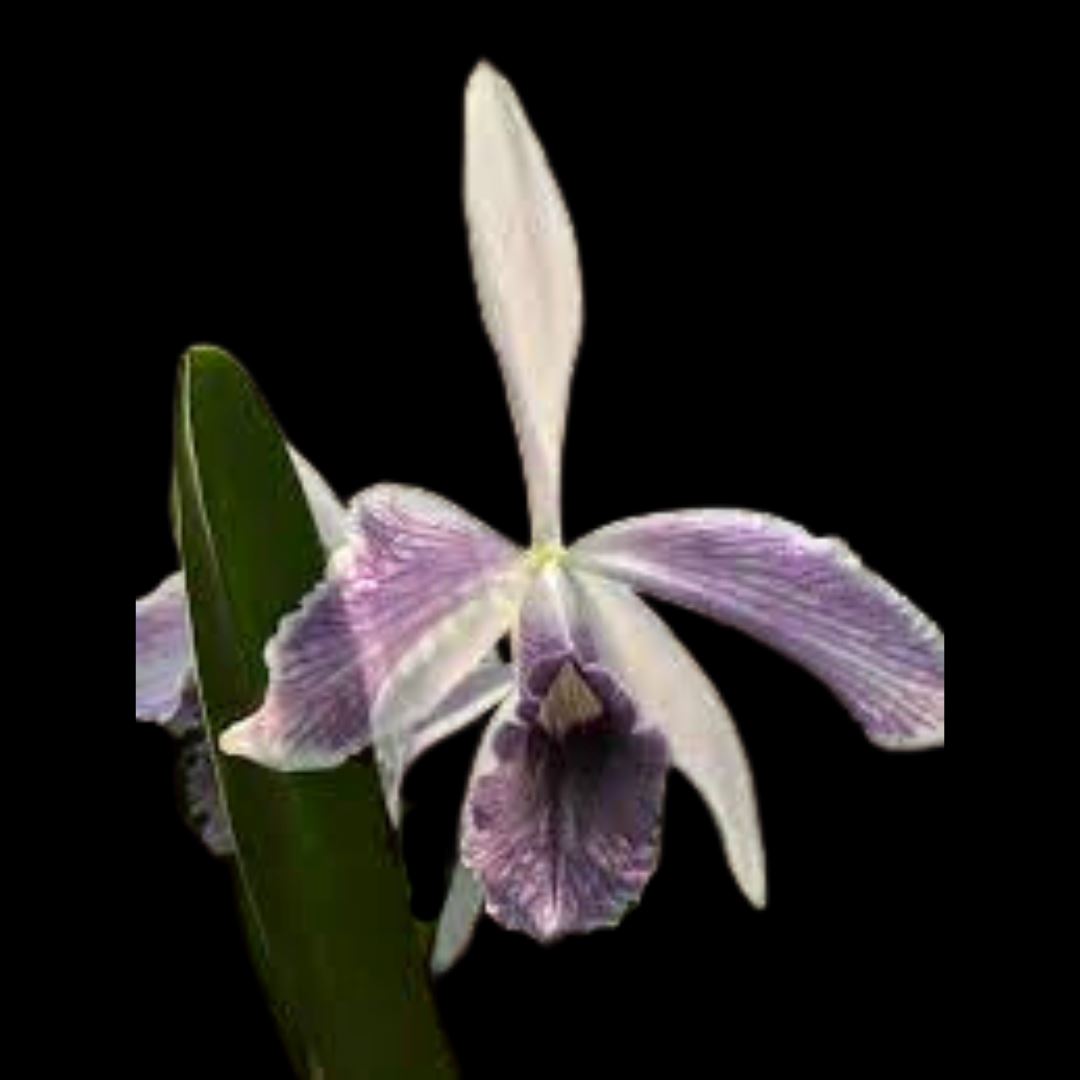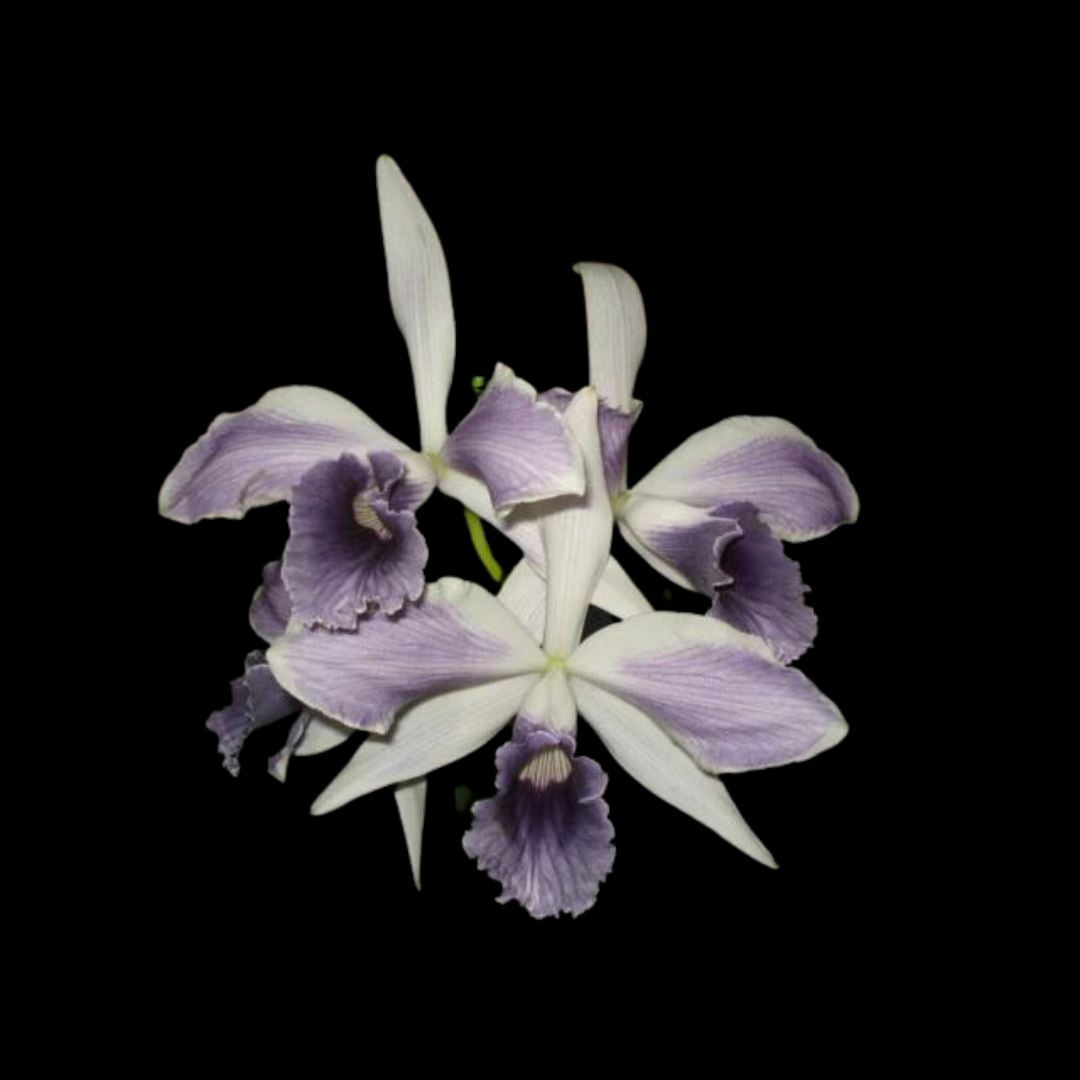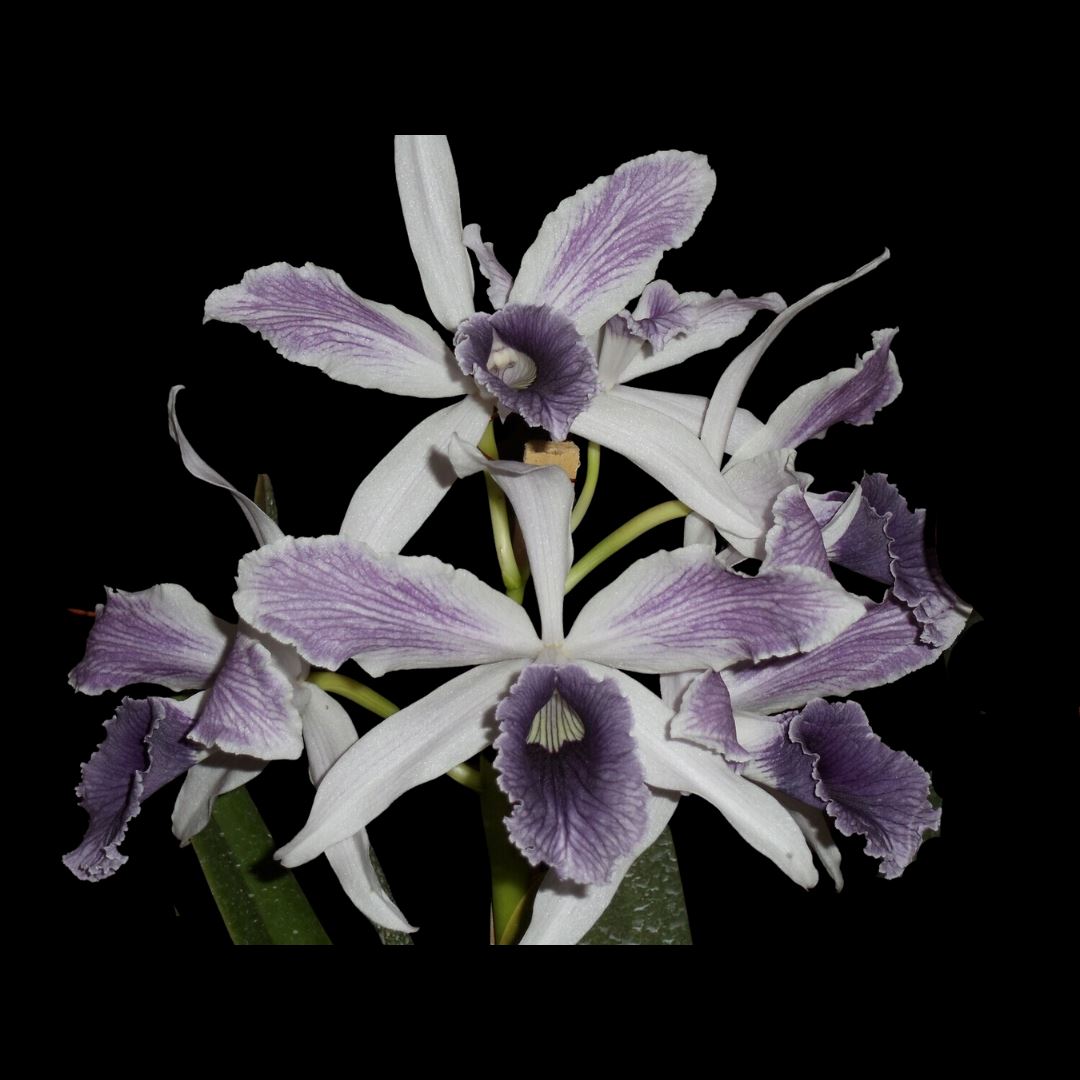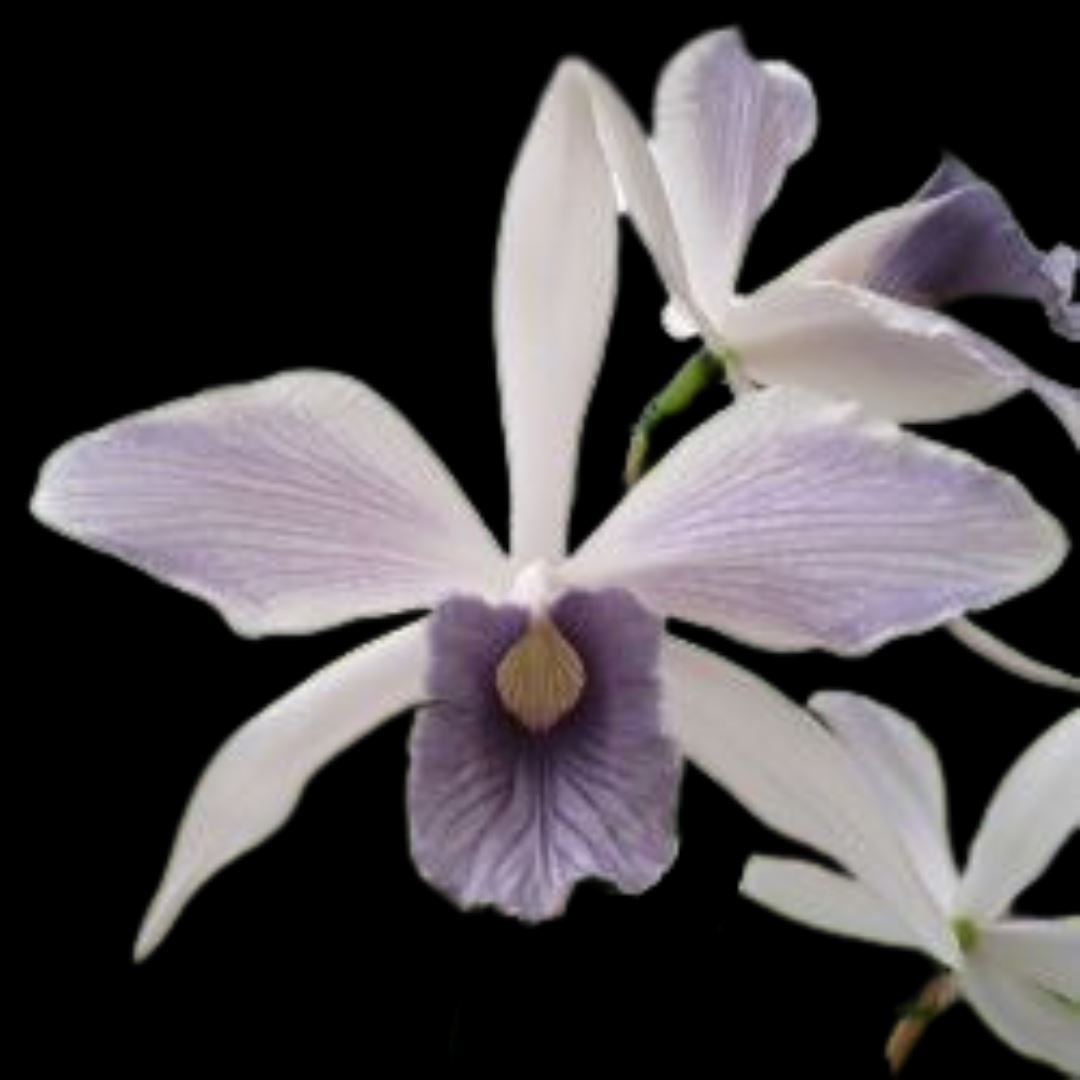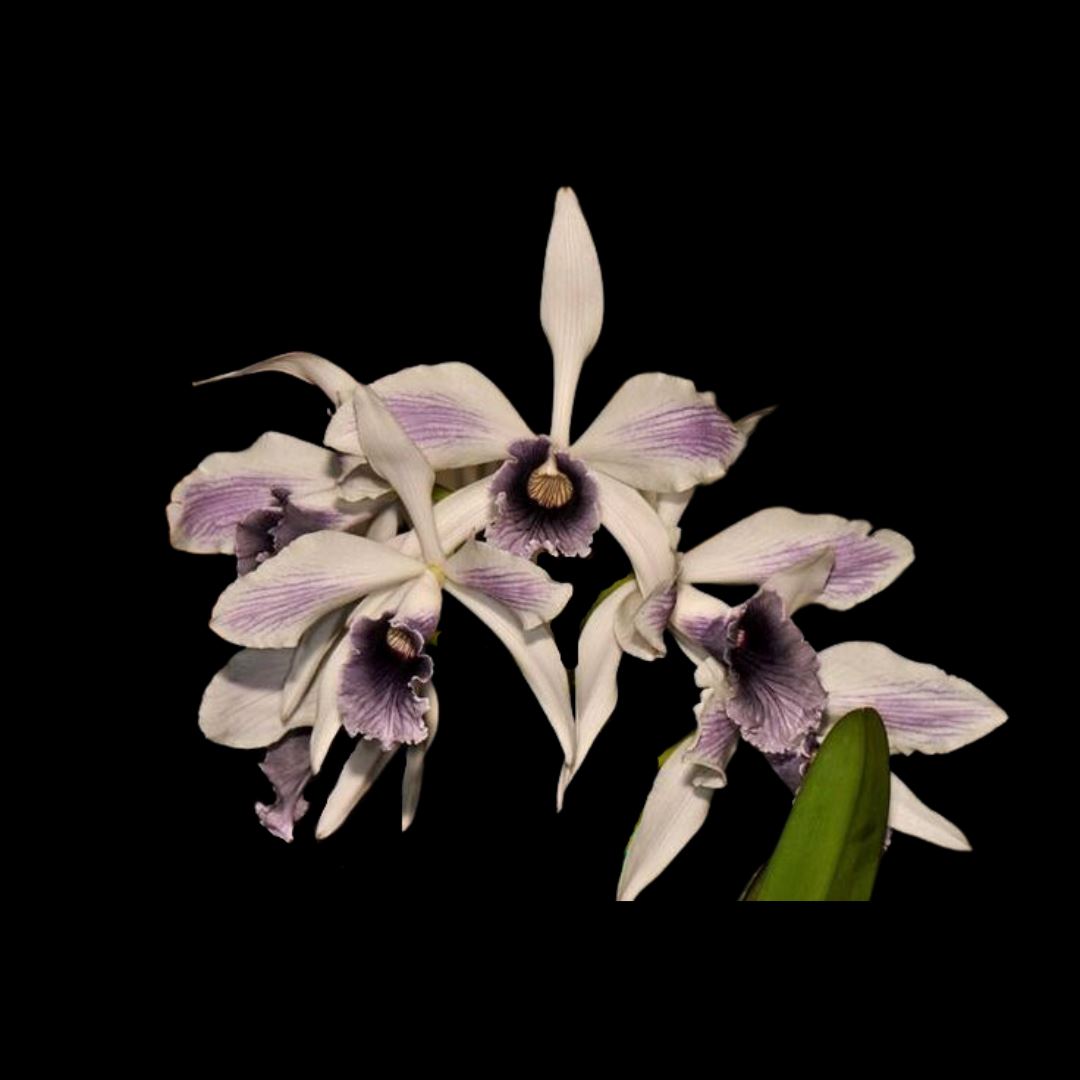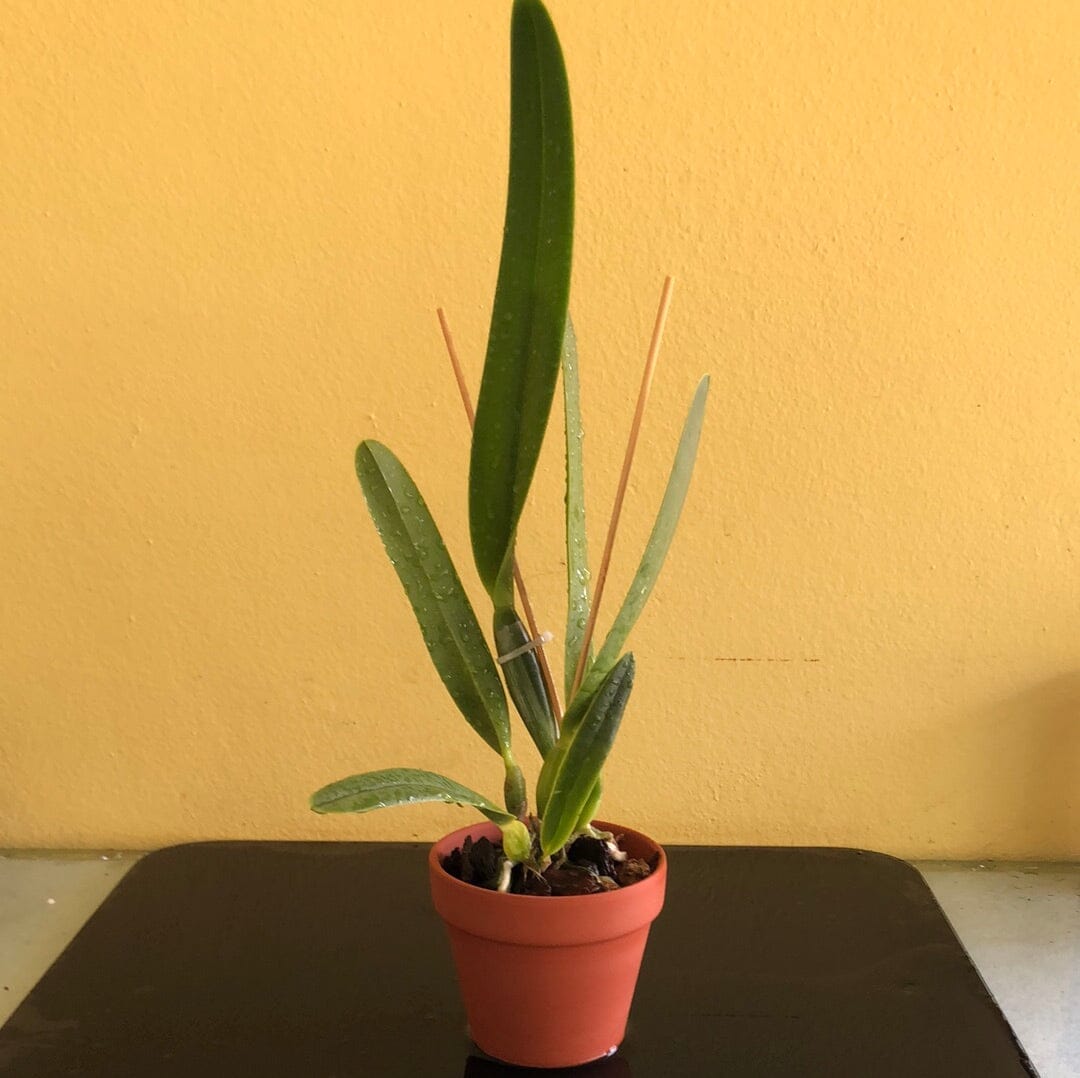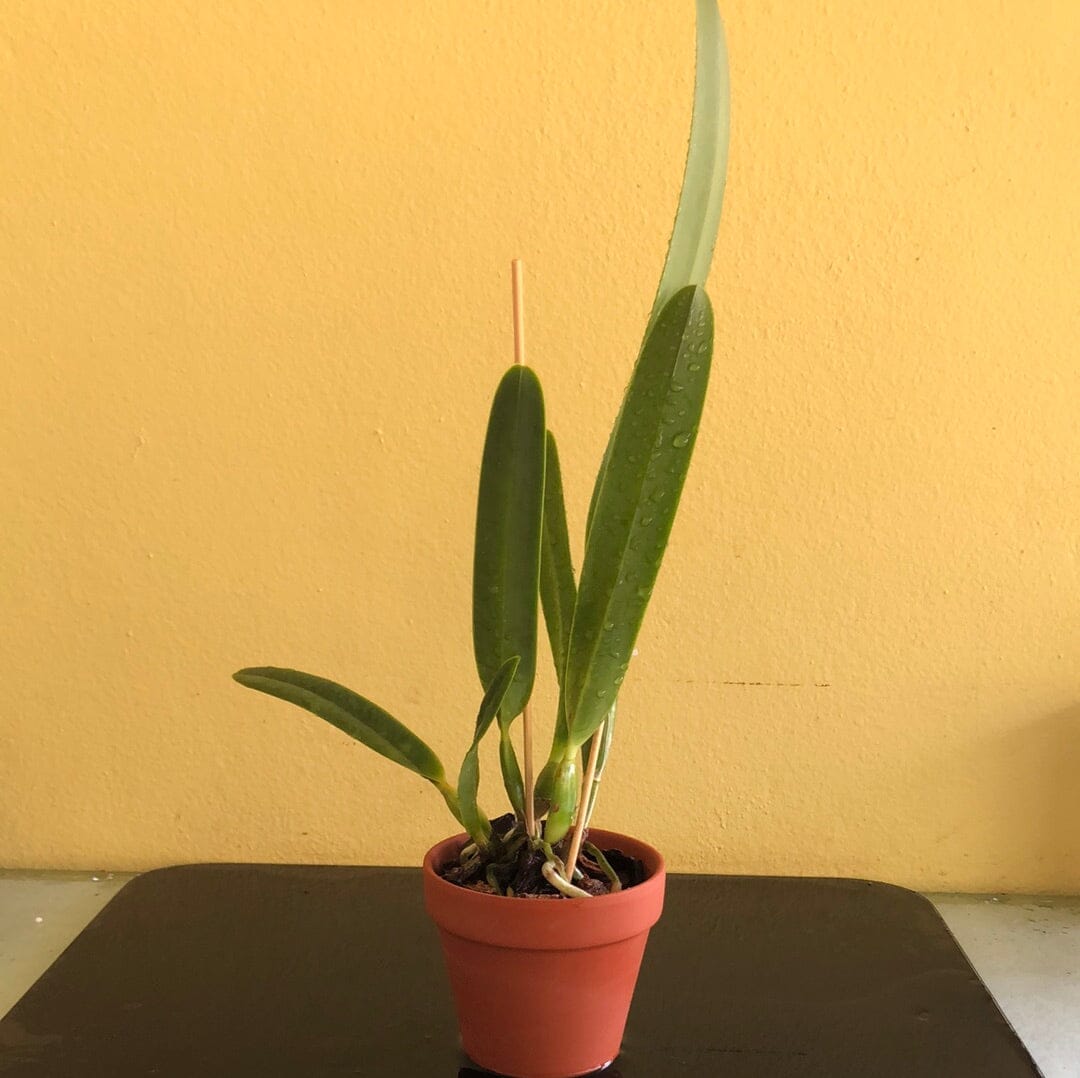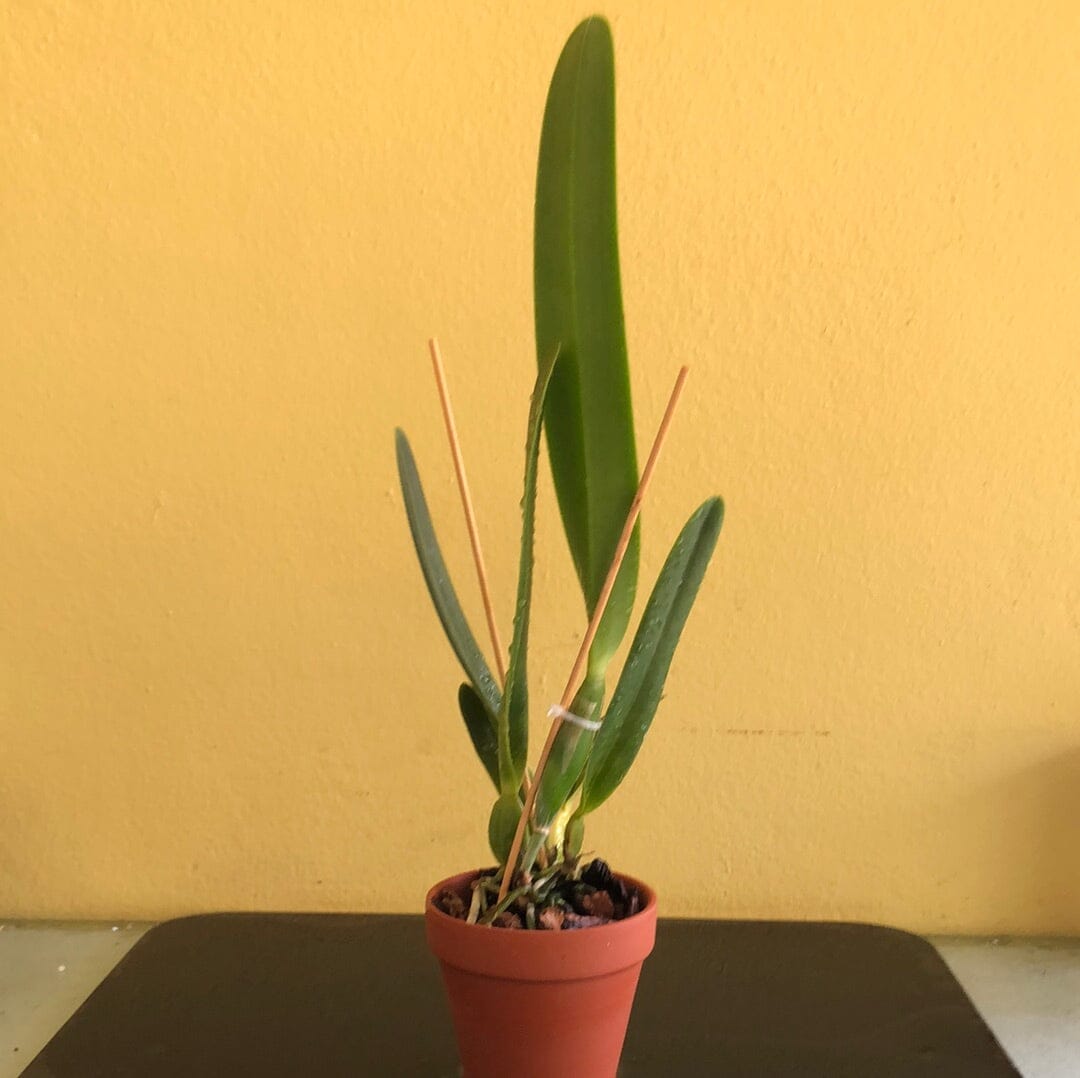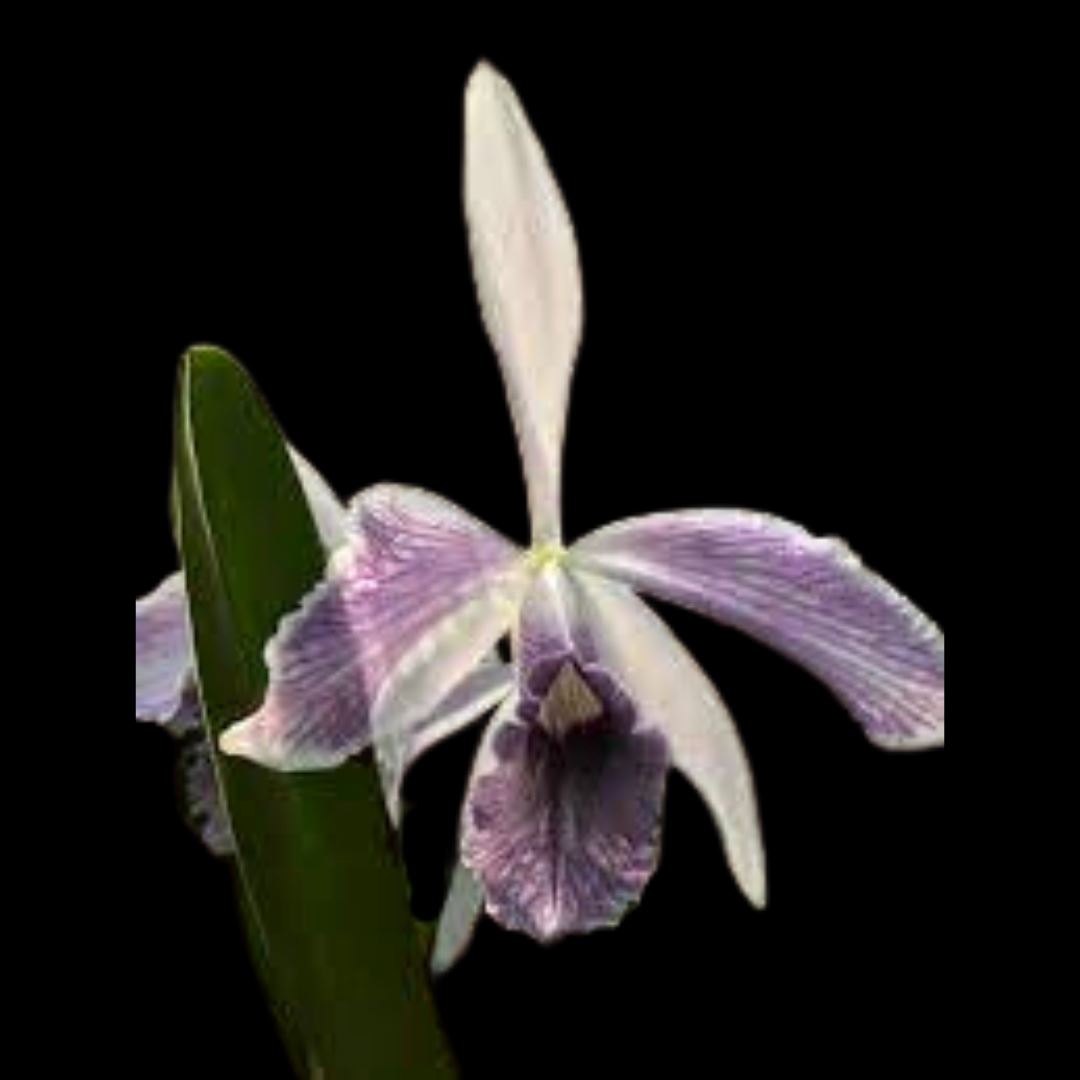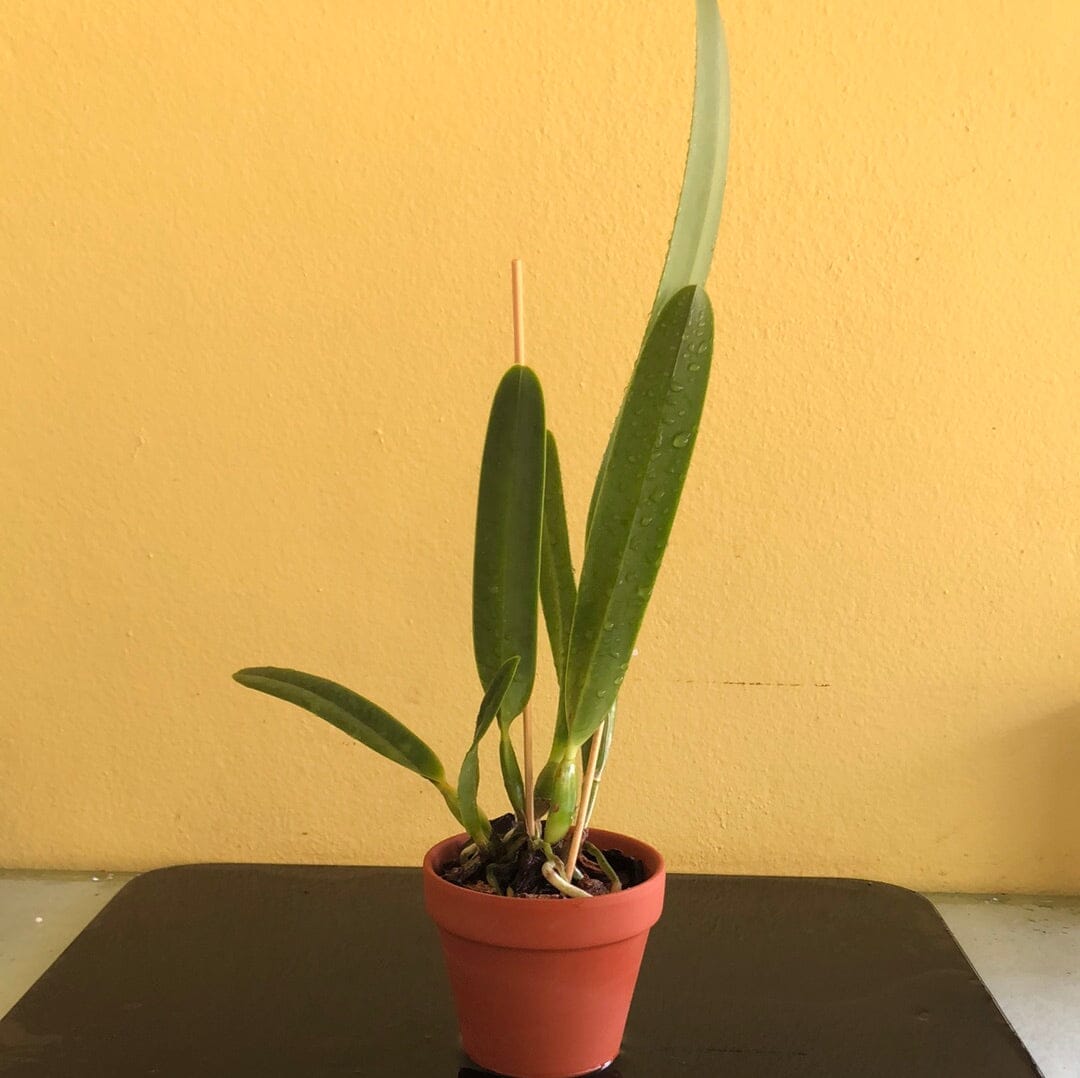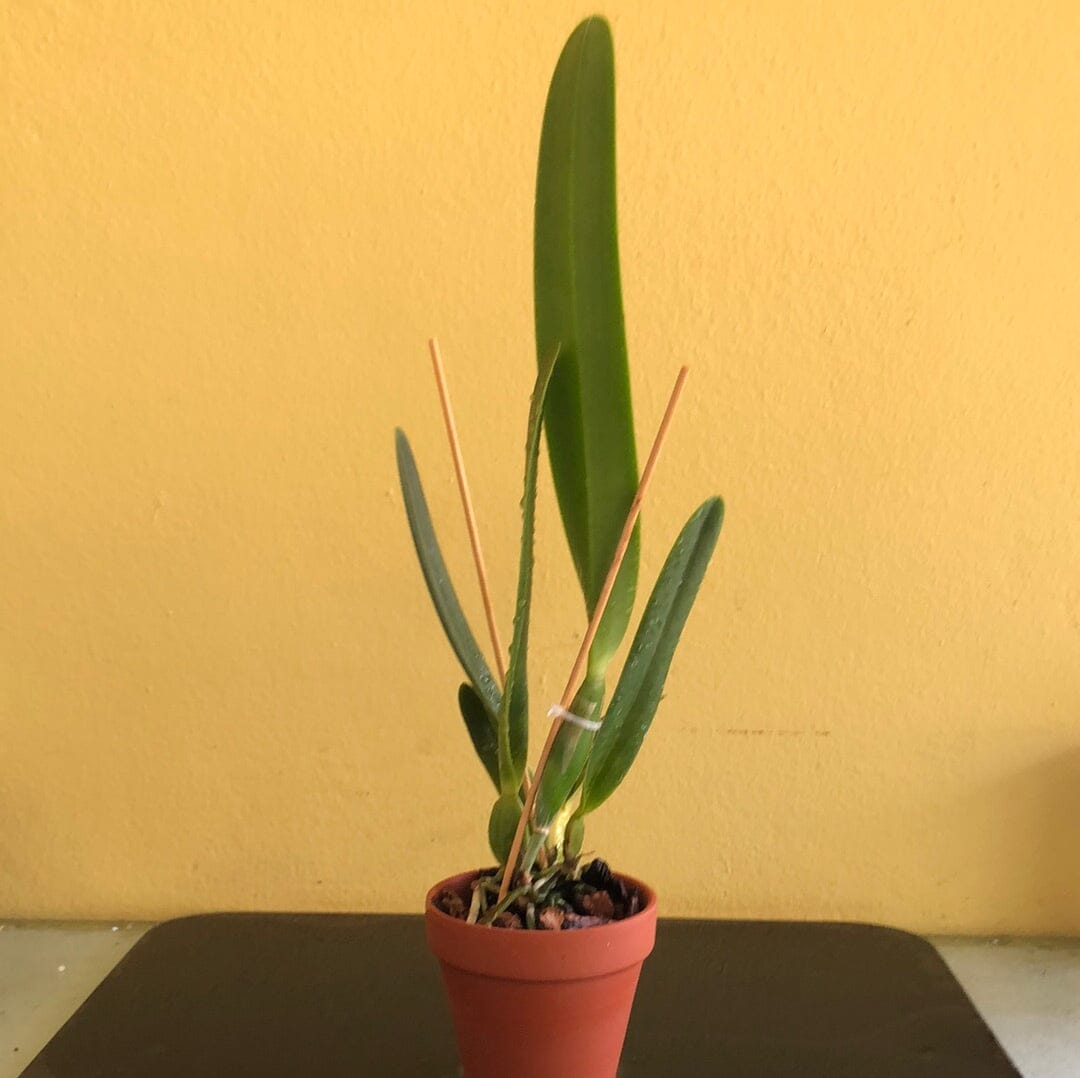La Foresta Orchids
Cattleya purpurata var. werkhauseri 'striata'
Cattleya purpurata var. werkhauseri 'striata'
No se pudo cargar la disponibilidad de retiro
Introducing the Cattleya purpurata var. werkhauseri 'striata,' a captivating orchid species renowned for its exquisite white blossoms adorned with delicate slate blue lines on the lip. This remarkable orchid, commonly referred to as Cattleya purpurata v. werkhauseri, hails from the lush landscapes of Brazil, where it thrives in diverse ecological niches.
Natural Habitat: Originally discovered in a narrow expanse of coastal wetlands, its natural habitat has since been found to extend eastwards from Santos and further southward, encompassing the states of Sao Paulo, Santa Catarina, and Rio Grande do Sul, all the way to the southern region of Porto Alegre. In these regions, it thrives on ancient towering trees in Rio Grande do Sul, perches on rocky hillsides facing the sea in Santa Catarina, and flourishes in marshy areas in Sao Paulo.
Physical Characteristics: This medium-sized epiphytic orchid boasts a height of approximately 100 cm, with a solitary, high-in-the-canopy leaf. Its striking clavate pseudobulbs, measuring about 60 cm in length, bear a single, erect, leathery, oblong-ligulate leaf, reaching 30-38 cm in length and 5 cm in width.
Blooming Beauty: The Cattleya purpurata var. werkhauseri 'striata' blooms from late spring through fall, presenting a robust raceme measuring 12 to 15 inches (30 to 37.5 cm) in length, enclosed by a sizable sheath. It showcases 3 to 7 enduring, showy, fragrant flowers with a delightful anise fragrance. The flowers typically span 15-20 cm in diameter, with occasional exceptions reaching up to 25 cm. Their coloration is strikingly diverse, featuring petals ranging from white to light pink or deep amethyst purple, often adorned with darker veining. The inner petals may be darker than the outer ones, and the base of the lip typically displays a whitish exterior, but its interior boasts pale to pale yellow hues adorned with intricate purple lines. These lines diverge, except for the central three, which align in parallel. The substantial central blotch is usually velvety-purple with chestnut-purple veins.
Cultivation Tips:
Light: Cattleya purpurata requires a moderate light level ranging from 25000-35000 lux. These resilient plants can even tolerate direct sunlight when coupled with strong air circulation.
Temperature: This orchid thrives in warm conditions. During summer, maintain average daytime temperatures around 30-31 °C and nighttime temperatures at 18-20 °C, resulting in a daily temperature difference of 11-12 °C. In winter, maintain average daytime temperatures of 19-20 °C and nighttime temperatures at 9-10 °C, with a daily temperature variation of 10 °C.
Humidity: To flourish, the Purple-stained Laelia requires humidity levels between 70-80% throughout most of the year, with a slight drop to around 65% during late spring and early summer.
Substrate, Growing Medium, and Repotting: Cattleya purpurata can thrive attached to pieces of tree ferns in high humidity conditions. During hot and dry weather, these attached plants may require multiple daily waterings. Alternatively, they can be cultivated in small pots or baskets filled with a well-draining, loose, quickly drying substrate. Larger pots should be avoided, as they can retain excessive moisture around the roots, potentially leading to rot. A recommended substrate includes medium or high-grade bark mixed with perlite and medium or large pieces of charcoal. Repotting or division should occur when new roots begin to emerge.
Watering: Frequent watering is essential, especially during active growth. However, ensure that the roots have slightly dried before the next watering. Over time, the amount of water can be slightly reduced, particularly after flowering, but prolonged dry periods should be avoided.
Fertilization: During active growth, fertilize the plants weekly with 1/4-1/2 of the recommended orchid fertilizer dose. Use a fertilizer rich in nitrogen from spring to mid-summer and switch to one with higher phosphorus content in late summer and autumn.
Rest Period: In winter, reduce watering, especially in colder temperatures and under conditions of limited light. Avoid complete drying, as the new growths mature during this period. Limit or completely eliminate fertilization until spring when new roots emerge.
This is a blooming size in a 4" pot about 1 to 2 years to bloom, grown from seed, limited!
Cattleya purpurata var. werkhauseri 'striata' is not just an orchid; it's a piece of Brazil's natural beauty, ready to grace your home with its mesmerizing presence. With proper care, this orchid will reward you with its breathtaking blossoms, adding an exotic touch to your indoor garden.

